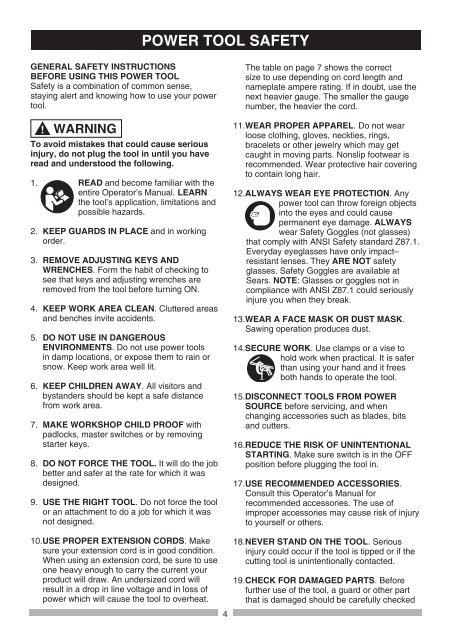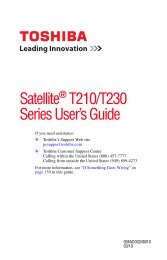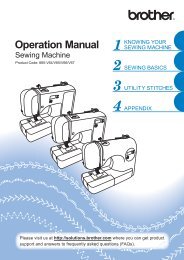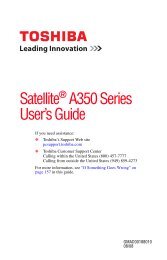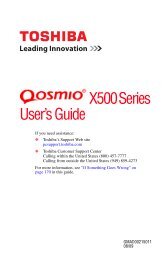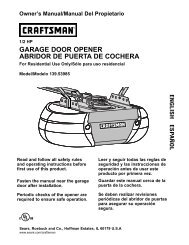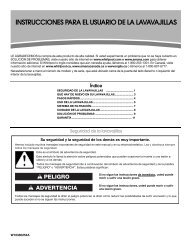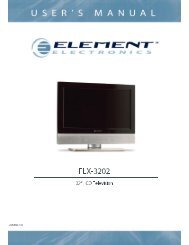Operator's Manual 10 in. COMPOUND MITER SAW WITH ... - Sears
Operator's Manual 10 in. COMPOUND MITER SAW WITH ... - Sears
Operator's Manual 10 in. COMPOUND MITER SAW WITH ... - Sears
Create successful ePaper yourself
Turn your PDF publications into a flip-book with our unique Google optimized e-Paper software.
GENERAL SAFETY INSTRUCTIONS<br />
BEFORE USING THIS POWER TOOL<br />
Safety is a comb<strong>in</strong>ation of common sense,<br />
stay<strong>in</strong>g alert and know<strong>in</strong>g how to use your power<br />
tool.<br />
!<br />
WARNING<br />
To avoid mistakes that could cause serious<br />
<strong>in</strong>jury, do not plug the tool <strong>in</strong> until you have<br />
read and understood the follow<strong>in</strong>g.<br />
1. READ and become familiar with the<br />
entire Operator’s <strong>Manual</strong>. LEARN<br />
the tool’s application, limitations and<br />
possible hazards.<br />
2. KEEP GUARDS IN PLACE and <strong>in</strong> work<strong>in</strong>g<br />
order.<br />
3. REMOVE ADJUSTING KEYS AND<br />
WRENCHES. Form the habit of check<strong>in</strong>g to<br />
see that keys and adjust<strong>in</strong>g wrenches are<br />
removed from the tool before turn<strong>in</strong>g ON.<br />
4. KEEP WORK AREA CLEAN. Cluttered areas<br />
and benches <strong>in</strong>vite accidents.<br />
5. DO NOT USE IN DANGEROUS<br />
ENVIRONMENTS. Do not use power tools<br />
<strong>in</strong> damp locations, or expose them to ra<strong>in</strong> or<br />
snow. Keep work area well lit.<br />
6. KEEP CHILDREN AWAY. All visitors and<br />
bystanders should be kept a safe distance<br />
from work area.<br />
7. MAKE WORKSHOP CHILD PROOF with<br />
padlocks, master switches or by remov<strong>in</strong>g<br />
starter keys.<br />
8. DO NOT FORCE THE TOOL. It will do the job<br />
better and safer at the rate for which it was<br />
designed.<br />
9. USE THE RIGHT TOOL. Do not force the tool<br />
or an attachment to do a job for which it was<br />
not designed.<br />
<strong>10</strong>.USE PROPER EXTENSION CORDS. Make<br />
sure your extension cord is <strong>in</strong> good condition.<br />
When us<strong>in</strong>g an extension cord, be sure to use<br />
one heavy enough to carry the current your<br />
product will draw. An undersized cord will<br />
result <strong>in</strong> a drop <strong>in</strong> l<strong>in</strong>e voltage and <strong>in</strong> loss of<br />
power which will cause the tool to overheat.<br />
POWER TOOL SAFETY<br />
4<br />
The table on page 7 shows the correct<br />
size to use depend<strong>in</strong>g on cord length and<br />
nameplate ampere rat<strong>in</strong>g. If <strong>in</strong> doubt, use the<br />
next heavier gauge. The smaller the gauge<br />
number, the heavier the cord.<br />
11.WEAR PROPER APPAREL. Do not wear<br />
loose cloth<strong>in</strong>g, gloves, neckties, r<strong>in</strong>gs,<br />
bracelets or other jewelry which may get<br />
caught <strong>in</strong> mov<strong>in</strong>g parts. Nonslip footwear is<br />
recommended. Wear protective hair cover<strong>in</strong>g<br />
to conta<strong>in</strong> long hair.<br />
12.ALWAYS WEAR EYE PROTECTION. Any<br />
power tool can throw foreign objects<br />
<strong>in</strong>to the eyes and could cause<br />
permanent eye damage. ALWAYS<br />
wear Safety Goggles (not glasses)<br />
that comply with ANSI Safety standard Z87.1.<br />
Everyday eyeglasses have only impact–<br />
resistant lenses. They ARE NOT safety<br />
glasses. Safety Goggles are available at<br />
<strong>Sears</strong>. NOTE: Glasses or goggles not <strong>in</strong><br />
compliance with ANSI Z87.1 could seriously<br />
<strong>in</strong>jure you when they break.<br />
13.WEAR A FACE MASK OR DUST MASK.<br />
Saw<strong>in</strong>g operation produces dust.<br />
14.SECURE WORK. Use clamps or a vise to<br />
hold work when practical. It is safer<br />
than us<strong>in</strong>g your hand and it frees<br />
both hands to operate the tool.<br />
15.DISCONNECT TOOLS FROM POWER<br />
SOURCE before servic<strong>in</strong>g, and when<br />
chang<strong>in</strong>g accessories such as blades, bits<br />
and cutters.<br />
16.REDUCE THE RISK OF UNINTENTIONAL<br />
STARTING. Make sure switch is <strong>in</strong> the OFF<br />
position before plugg<strong>in</strong>g the tool <strong>in</strong>.<br />
17.USE RECOMMENDED ACCESSORIES.<br />
Consult this Operator’s <strong>Manual</strong> for<br />
recommended accessories. The use of<br />
improper accessories may cause risk of <strong>in</strong>jury<br />
to yourself or others.<br />
18.NEVER STAND ON THE TOOL. Serious<br />
<strong>in</strong>jury could occur if the tool is tipped or if the<br />
cutt<strong>in</strong>g tool is un<strong>in</strong>tentionally contacted.<br />
19.CHECK FOR DAMAGED PARTS. Before<br />
further use of the tool, a guard or other part<br />
that is damaged should be carefully checked


